The Growth of Serverless Architectures and the IT Observability Challenge
The growth of serverless architectures has revolutionized how companies develop and deploy applications. Without the need to manage servers, teams can automatically scale and optimize costs, but they face new challenges in return:
⚠️ Difficulty diagnosing failures due to the ephemeral nature of instances.
⚠️ Distributed events across multiple services without a single point of monitoring.
⚠️ Dynamic scaling, making issues hard to reproduce and debug.
In this scenario, IT observability with Elastic becomes essential to ensure the performance, stability, and security of applications in serverless environments.
🔎 Discover how Elastic helps monitor serverless applications in real-time and detect incidents before they affect users.
The Challenges of Observability in Serverless Architectures
In a traditional environment, teams can access server logs and monitor running processes. However, in a serverless architecture, the code runs in ephemeral instances within services such as:
- AWS Lambda
- Azure Functions
- Google Cloud Functions
- FaaS (Functions as a Service)
These environments present unique challenges:
- Lack of visibility into service dependencies → makes detecting the root cause of errors difficult.
- Asynchronous events and fragmented logs → make it challenging to correlate issues.
- Dynamic scaling → an error may not be visible in a low-load environment but can become critical under high demand.
To solve this, Elastic provides a real-time IT observability platform that unifies logs, metrics, and traces from serverless applications into a single analysis environment.
How Elastic Facilitates Observability in Serverless
✔ Centralization of Logs and Metrics
Elastic collects logs and metrics from serverless services across multiple sources, preventing data fragmentation.
✔ Monitoring Ephemeral Executions
It stores and analyzes logs from functions that no longer exist, making problem diagnosis easier.
✔ Distributed Trace Analysis
With Elastic APM, teams can visualize the complete flow of a request across serverless services, detecting bottlenecks and unexpected latencies.
✔ Smart Alerts and Event Correlation
Elastic allows you to set up automated alerts that notify about recurring errors, improving incident response.
Serverless Observability with Elastic: Key Benefits
- Reduced Diagnosis Time → Issues are detected faster, even in ephemeral instances.
- Performance Optimization → Identifies functions with long execution times or unexpected latencies.
- Security and Compliance → Logs every event for audit and security compliance.
- Better User Experience → By detecting and fixing issues before they affect operations.
Elastic in Action: Observability in Serverless Applications and SAP
For companies operating with SAP, integration with the SAP Observability Connector allows extracting critical metrics from SAP systems and analyzing them with Elastic.
Additionally, Elastic’s ability to integrate with cloud services such as AWS, Azure, and Google Cloud makes it one of the most complete solutions for monitoring hybrid, multi-cloud, and serverless environments.
Discover how Elastic enables IT observability at scale in dynamic, serverless environments with our guide on Observability and Monitoring with Elastic.
Conclusion
Serverless architectures offer great flexibility and scalability, but they also introduce new challenges in monitoring and diagnosing issues.
With Elastic, companies can achieve comprehensive observability in serverless environments, ensuring the performance, stability, and security of their production applications.
If you are looking for an advanced IT observability platform, explore our solutions with Elastic and ensure full control over your cloud applications. 🚀




